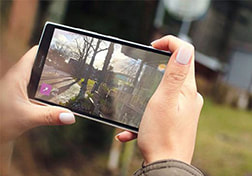
LONDON - Your smartphone apps may soon help you by detecting what mode of transport you use to travel and automatically offer relevant advice, a new study suggests. According to the researchers, the Machine Learning (ML) techniques developed in a global research competition could also lead to smartphones being able to predict upcoming road conditions and traffic levels, offer route or parking recommendations and even detect the...

food and drink consumed by a smartphone user while on the move. "This dataset is truly unique in its scale, the richness of the sensor data it comprises and the quality of its annotations," said Daniel Roggen, Professor at the University of Sussex in the UK. For the study, published in The Journal of the ACM, the team collected the equivalent of more than 117 days worth of data monitoring aspects of commuters' journeys in the UK, using a variety of transport methods to create the largest publicly available dataset of its kind.
The project gathered data from four mobile phones carried by researchers as they went about their daily commute over seven months.
The team launched a global competition challenging teams to develop the most accurate algorithms to recognise eight modes of transport (sitting still, walking, running, cycling or taking the bus, car, train or subway) from the data collected from 15 sensors measuring everything from movement to ambient pressure.
The project saw 17 teams take part with two entries achieving results with more than 90 per cent accuracy, eight with between 80 and 90 per cent, and nine between 50 and 80 per cent.
The winning team achieved the highest score of 93.9 per cent through the use of a combination of deep and classical ML models.
In general, deep learning techniques tended to outperform traditional ML approaches, although not to any significant degree.
The project gathered data from four mobile phones carried by researchers as they went about their daily commute over seven months.
The team launched a global competition challenging teams to develop the most accurate algorithms to recognise eight modes of transport (sitting still, walking, running, cycling or taking the bus, car, train or subway) from the data collected from 15 sensors measuring everything from movement to ambient pressure.
The project saw 17 teams take part with two entries achieving results with more than 90 per cent accuracy, eight with between 80 and 90 per cent, and nine between 50 and 80 per cent.
The winning team achieved the highest score of 93.9 per cent through the use of a combination of deep and classical ML models.
In general, deep learning techniques tended to outperform traditional ML approaches, although not to any significant degree.

 RSS Feed
RSS Feed
